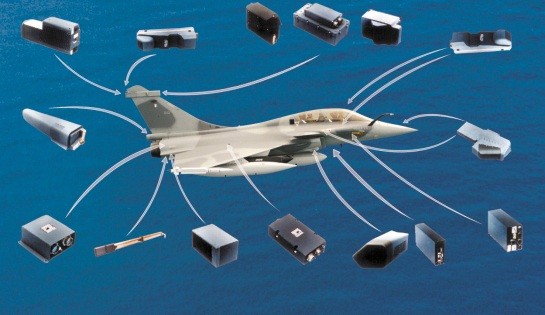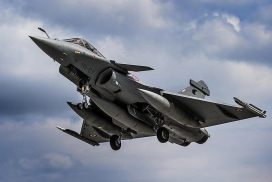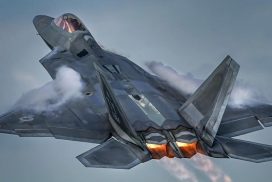 SPECTRA (Système de Protection et d’Évitement des Conduites de Tir du Rafale) is a integrated defensive aids suite for Dassault Rafale developed by Thales Group. Modern air warfare pose a different challenge on aircraft self-defense capabilities. SPECTRA provides complete automated system directly integrated into the Rafale. SPECTRA ensures efficient electromagnetic detection, laser warning, IR detection for missile warning, jamming and chaff/flare dispensing, even in the most demanding multi-threats environment.
SPECTRA (Système de Protection et d’Évitement des Conduites de Tir du Rafale) is a integrated defensive aids suite for Dassault Rafale developed by Thales Group. Modern air warfare pose a different challenge on aircraft self-defense capabilities. SPECTRA provides complete automated system directly integrated into the Rafale. SPECTRA ensures efficient electromagnetic detection, laser warning, IR detection for missile warning, jamming and chaff/flare dispensing, even in the most demanding multi-threats environment.
SPECTRA is divided into different modules and sensors strategically positioned throughout the airframe to provide all-round coverage. The latest advances in micro-electronic technology have led to a new system which is much lighter, more compact and less demanding than its ancestors in terms of electrical and cooling powers.
All elements of the Thales SPECTRA system are built into the airframe, have high levels of automation and system integration. SPECTRA includes radar detectors, laser warning receivers and infrared missile approach warning. Active elements of the system include chaff and flare dispensers, and radio frequency jamming. SPECTRA also has ELINT functions, for recording and analyzing the characteristics of hostile emitters and their locations.
Its advanced digital technology, provides passive long-range detection, identification and localization of threats, and allows the pilot or system to react immediately with the best defensive measures: jamming, decoys, evasive manoeuvrings and/or any combination of these actions. SPECTRA features accurate Direction-finding and reduced time for signal identification. Offering unique high sensitivity detection and multiple threat capability, and operating smart data fusion between multi-spectral sensors.
By virtue of its fully passive situational awareness capability, SPECTRA is a major contributor to the low observability concept of Rafale. Thales Group and Dassault Aviation have mentioned stealthy jamming modes for the SPECTRA system, to reduce the aircraft’s apparent radar signature. It is not known exactly how these work or even if the capability is fully operational, but it may employ active cancellation technology, such as has been tested by Thales and MBDA. Active cancellation is supposed to work by sampling and analyzing incoming radar and feeding it back to the hostile emitter out of phase thus cancelling out the returning radar echo.
The proliferation of new generation weapons such as man-portable surface-to-air missiles has raised concern among key decision makers. Both laser and IR missile warning systems have been mounted on the fighter. They provide 360 degree coverage and ensure detection/warning of incoming threats. The IR missile warning ensures high probability of detection and low false alarm rate, even against totally passive IR-guided weapons. Four upward-firing launcher modules for various types of decoys – are built into the airframe, and the Rafale is equipped with internal chaff dispensers. The exact location and types of systems detected by Spectra can be recorded for later analysis, giving Rafale operators a substantial built-in SIGINT/ELINT capability while completing specialized dedicated intelligence platforms.
The first Spectra flight on-board a Rafale took place in September 1996, after M02 prototype had been retrofitted. Since then, the system has been thoroughly tested in very complex electronic warfare scenarios and environments. For instance, Rafale M02 was pitted against a wide variety of the latest IR-defence systems during the NATO Mace X trial organized in August 2000 in Southwest France, and its self-defence suite performed flawlessly. It is now in full production, and is already entering operational service on-board French Navy Rafale. Spectra, a particularly cost effective system, has been designed with growth in mind to keep the Rafale abreast of emerging threats.




